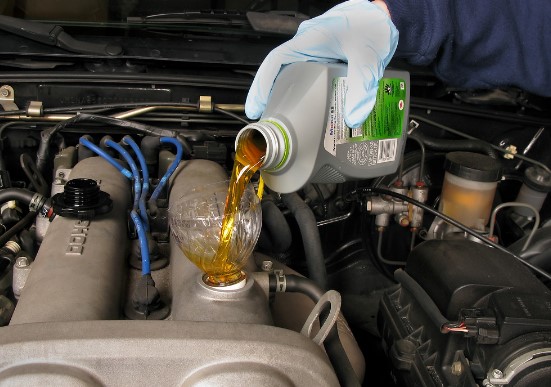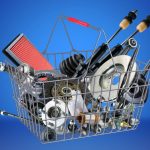10 basic Car Repairs everyone should know
Table of Contents
Changing your oil
Once the engine has reached its proper temperature, turn it off, pop open your hood and let it cool down for about 10 minutes.
Checking/Adding Oil to Your Car
You can find out how much oil you need by checking your car’s manual (or looking where the oil goes if possible). If you’re not able to find this info but still feel like you should add some, err on the side of caution and put in less than what is necessary rather than more because you can always drain some off later if need be. Make sure that the appropriate kind of motor oil gets added. Usually there will either be a sticker or an inscription somewhere on top of the engine with a few numbers, usually something along the lines of “SAE 5W-30” which you can then use as a reference to find out what type of oil your car needs. It’s also important that once you have decided what kind of oil to buy, it matches the viscosity rating recommended for your vehicle as mentioned in your owner’s manual.
Flushing Your Car’s Coolant
If your car is overheating and/or leaking coolant (usually greenish blue but may be orange), there are two potential causes: either your engine is worn out or there is an obstruction in one of the hoses or passages that carries coolant around inside your engine block. You’ll need to see a mechanic ASAP in order to find out where the problem lies, but you can also use the same methods described below to check if your engine is worn out.

Checking/Adding Fluid to Your Power Steering
If your power steering light comes on when you turn or if there’s a high-pitched whirring sound coming from your wheel when you’re turning it, it means that the fluid level is getting low and needs to be topped up. Consult your car’s manual for instructions on how much fluid your car takes.
Adding Air to Your Tire
Either way, once your tire pressure has been set correctly, remember to occasionally check it again because tires tend to slowly lose their air pressure. This is why you should do it at least once every couple of weeks (but be careful not to let yourself get stranded somewhere because of a small oversight like this!). This can usually be done with any tire pressure gauge that you might have, but if you don’t have one, then there are plenty for purchase online or in local stores.
Rotating Your Tires
If your car has the right type of wheels and tires installed on it, then rotating them periodically will ensure even wear so that each tire/wheel gets an equal amount of time on the road over its lifespan. It also ensures that they wear out more slowly than if they all stayed on one axle. There are many different opinions about how often to rotate your tires. Some people do it every other oil change, while others recommend a more aggressive rotation cycle of once a month or even once a week! The answer to this question depends on many factors such as how many miles you drive on average per year and where you drive most of the time (city streets vs country roads, etc).
Checking/Adding Brake Fluid
If there’s ever an instance where your brake pedal feels soft when you’re pushing down on it, chances are that there isn’t enough brake fluid in your master cylinder reservoir so top it up! Consult your car’s manual for instructions of how much your vehicle takes.
Bleeding Your Clutch
This step is only relevant to clutch-type manual transmission vehicles. I cannot be held responsible for any damage caused by attempting this yourself if you do not have the correct equipment and/or expertise! If your engine has trouble engaging or releasing its “grip” on your drive wheels (i.e. it’s either sticking or slipping), there may be air bubbles in your hydraulic system slowing down the process of getting everything moving properly again and necessitating that you bleed your clutch. This is a fairly simple procedure that just involves putting the car into first gear, opening up an artery valve inside your master cylinder reservoir using a thin flathead screwdriver, and allowing all of the trapped air to escape as fluid comes rushing out through the hole. With the artery valve closed again, pump your clutch pedal a few times to get everything moving smoothly and then add more fluid as required. Consult your car’s manual for further instructions if you’re not sure how to go about doing this.
Checking/Replacing Spark Plugs
If one or more of your engine cylinders isn’t firing up properly or is producing a lower amount of power than it usually does, chances are that your spark plugs need replacing. This can be done by almost anyone with just a little bit of knowledge on cars and some simple tools at their disposal so there’s no reason why you shouldn’t do it yourself! Check out our video guide here: https://www.youtube.com/watch?v=lkoAfo-DX3E
Checking/Adding Transmission Fluid
A car’s transmission fluid is responsible for getting the car into gear and pushing all of that power from the engine to the drive wheels. If it’s not moving around as much as it should be, there may be a leak somewhere and this will need to be fixed before too long so your best bet is to top up what you can with some new fluid and check back regularly in case there is more damage than you thought or the problem persists. This will ensure that your gears aren’t slipping when they shouldn’t be (which can cost driving power) while also preventing permanent transmission damage which could result in having to replace your whole transmission if things get too bad.
This step is only relevant to cars with a manual transmission (i.e. the driver actually has to “shift gears” when driving instead of being in full-auto mode). I cannot be held responsible for any damage caused by attempting this yourself if you do not have the correct equipment and/or expertise!
There’s nothing wrong with getting your hands dirty every once in a while by doing some basic car repairs yourself that don’t require necessarily an auto mechanic or from taking your vehicle into a garage – especially considering that they’re very easy to do, can save you a lot of money, and will potentially help you keep your beloved car around much longer than it would be able to otherwise! Want more DIY car maintenance action?
With my new-found knowledge in car repairs, I also checked topics about car insurance companies. TPL insurance is the basic and required insurance in the Philippines. It provides limited protection to the other person for both medical and death. It is also commonly known as Compulsory Third Party Liability or CTPL Insurance. It is important to choose well the company you insure it with so you will be exempt from the hassle, financial burden and unfamiliar circustances when you hit another person when using your car.










